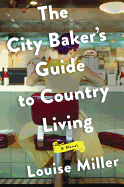
| Publisher: | Pamela Dorman Books | |
| Genre: | Fiction, Romance, Romantic Comedy, Contemporary Women, Family Life | |
| ISBN: | 9781101981207 | |
| Pub Date: | August 2016 | |
| Price: | $26 |
| Starred | Fiction |
by Louise Miller
Boston pastry chef Olivia Rawlings relishes her role as creator of elegant desserts for a chic Back Bay supper club. But when a flambé gone wrong sets the entire place on fire, Livvy packs up her dog, Salty, and flees to the tiny town of Guthrie, Vt. Her best friend, Hannah, helps her find a new job: baking at the Sugar Maple Inn, run by Margaret, a stern widow. Margaret is determined to reclaim her blue-ribbon status in the annual pie-baking contest at the local county fair, and Livvy settles in to help her, making desserts for the inn and testing countless pie variations. Living with Salty in the inn's sugarhouse, she gradually makes friends with a few of the locals, some of whom share her love of banjo music. In her debut novel, The City Baker's Guide to Country Living, Louise Miller brings both the pastry chef and her creations to life.
In the hands of a less accomplished writer, Livvy's story might read as cliché: woman fleeing troubled city life finds hope and meaning in a small town. But Miller's plot contains a few unexpected twists, and her characters, even the supporting ones, are refreshingly complicated and gloriously flawed. She delights in the sensory details of her story--melancholy banjo chords, lipstick-red autumn leaves--while exploring the vagaries of community: the ways we wound and heal each other. Warmhearted and hopeful, with a dash of melancholy and more than a pinch of humor, The City Baker's Guide to Country Living is a treat. --Katie Noah Gibson, blogger at Cakes, Tea and Dreams
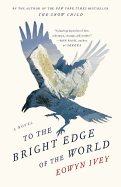
| Publisher: | Little, Brown | |
| Genre: | General, Fiction, Historical, Literary | |
| ISBN: | 9780316242851 | |
| Pub Date: | August 2016 | |
| Price: | $26 |
| Fiction |
by Eowyn Ivey
Alaskan author Eowyn Ivey reintroduces the fictional Wolverine River Valley of her debut, The Snow Child, in To the Bright Edge of the World. Instead of isolated homesteaders of the 1920s, this novel follows the adventure of an 1885 expedition into Alaskan Territory. What the novels share are vivid depictions of the natural elements' harsh brutality and a mystical, folkloric component.
The story of the expedition is framed by modern-day correspondence between Montanan Walter Forrester and the curator of the historical museum in Alpine, Alaska. Forrester is urging the museum to review the memorabilia from his great-uncle Colonel Allen Forrester's remarkable trek through what is now Alpine. As they delve into the records of the colonel and his wife, Sophie, they piece together a story of horrific physical trials, vast and cold beauty, and the changes brought by the opening of the territory.
Newly pregnant Sophie, who traveled from Boston to Vancouver Barracks in Washington Territory with her husband, awaited his return. Irritated by her confinement, she rejected social expectations and immersed herself in the study of photography. While Sophie experienced her own challenges, her chapters are welcome departures from the harsh expedition's narrative.
Ivey populates her novel with rich supporting characters, including an enigmatic Indian woman, a mysterious raven and the colonel's individualistic team members. A story of love and commitment, The Bright Edge of the World is spellbinding Pacific Northwest historic fiction. --Cheryl Krocker McKeon, manager, Book Passage, San Francisco
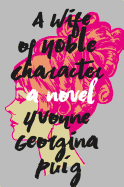
| Publisher: | Holt | |
| Genre: | Fiction, Contemporary Women, Literary | |
| ISBN: | 9781627795555 | |
| Pub Date: | August 2016 | |
| Price: | $27 |
| Fiction |
by Yvonne Georgina Puig
In Yvonne Georgina Puig's A Wife of Noble Character, Vivienne Cally comes from Houston, Tex., high society, but her value is fading: 30 years old, unmarried and living with a coldly distant aunt, she possesses no wealth to speak of. Preston Duffin is an architecture graduate student from a different but adjacent class of people; the two have known each other all their lives. Despite her traditional upbringing, Vivienne is refreshingly spirited and skeptical, and Preston's challenges to the life she knows intrigue her. He is attracted in turn not only to her beauty, but also to her similarly questioning attitude. Because the novel's perspective shifts between the two, readers know what neither Vivienne nor Preston does as they are mutually drawn together, mystified and intimidated.
Plot progression would be accelerated if the characters would only talk to one another, but neither of them have the ability to speak honestly. Meanwhile, Vivienne's society affairs--bridal and baby showers, lunches, mani-pedis--and her increasing struggle to maintain the façade of effortless wealth provide both heartrending pathos and entertainment, as the scene shifts from Houston to Paris, where Vivienne attempts a professional career as an art consultant, and back. Lavish details evoke the fashion and humidity of an expertly rendered setting, and Puig's characters can be both silly and profoundly recognizable. With allusions to Edith Wharton's The House of Mirth, and sensitive criticisms and clever details, A Wife of Noble Character is both fun and intelligent, much like its heroine. --Julia Jenkins, librarian and blogger at pagesofjulia
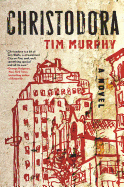
| Publisher: | Grove Press | |
| Genre: | Fiction, Gay, Literary | |
| ISBN: | 9780802125286 | |
| Pub Date: | August 2016 | |
| Price: | $26 |
| Fiction |
by Tim Murphy
Tim Murphy's massive and fearless debut novel has a daunting task: covering the AIDS pandemic from the early 1980s into the year 2021 without becoming pedantic. Christodora, however, flourishes as a sweeping and moving novel filled with vivid and complex characters who engender empathy and affection.
Set in the Christodora, a towering apartment building in Manhattan's East Village, Murphy's epic family saga acts as a microcosm of the massive changes in New York City over four decades. Through the tenants' lives, Murphy shows how the East Village evolved from a desolate area filled with junkies and crime to an affordable place for brave bohemian artists who were then pushed out by moneyed hipsters and corporate greed.
While the action jumps around in time, the compelling cast keeps the reader anchored to their individual stories involving AIDS activism, addiction, family secrets and mental health issues. Memorable core characters include Mateo, the drug-addicted adopted son of two wealthy East Village artists, Jared and Milly Traum; Hector, a longtime gay activist who starts using meth as a coping device after the death of his partner; and HIV-positive and pregnant Issy. Murphy, who reported on HIV/AIDS issues for more than two decades in POZ, Out and the Advocate, knows the landscape of that ongoing pandemic, but never allows the human stories to get bogged down by the minutiae of medical science and politics. Christodora is an epic told with compassion, surprising humor and a strong sense of history and pacing. --Kevin Howell, independent reviewer and marketing consultant
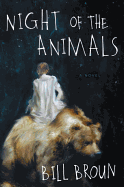
| Publisher: | Ecco | |
| Genre: | General, Fiction, Science Fiction, Dystopian | |
| ISBN: | 9780062400796 | |
| Pub Date: | July 2016 | |
| Price: | $26.99 |
| Fiction |
by Bill Broun
In this ambitious debut, Night of the Animals, Bill Broun demonstrates that he is more skilled than many seasoned novelists. Britain in 2052 is bleak, ruled by King Harry IX and split into two classes: New Aristocrats and Indigents. The Red Watch keeps have-nots in line with nasty neuralpikes, and healthcare is meted out according to class. Comet-worshipping suicide cults are on the rise, the most notorious of which wants to destroy the world's remaining animals.
The novel's hero is obese, 90-year-old Indigent Cuthbert Handley. Severely delusional and hopelessly addicted to the hallucinogenic booze Flōt, Cuthbert has long heard animals speaking to him. He also believes that his long-lost brother is alive and is the Christ of Otters, and that in order to find him, Cuthbert must free the animals from the London Zoo.
This is a rare pre-apocalyptic novel. One of its themes--that doom is abstract, distant and vague until it appears at one's doorstep--gives Night of the Animals heartbreaking urgency. Broun is a master of language, inventing a hybrid future dialect. Footnoted definitions are sometimes a distraction, as meanings can be gleaned from context, but this is a small quibble. He handles mental illness and addiction with sensitivity and humor, creating in Cuthbert a Quixote for the postmodern era. Night of the Animals is a compelling read, filled with pathos and among the best of today's literary science fiction. --Zak Nelson, writer and bookseller
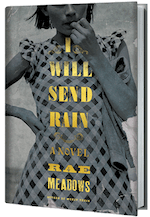
| Publisher: | Holt | |
| Genre: | General, Fiction, Family Life, Historical, Literary | |
| ISBN: | 9781627794268 | |
| Pub Date: | August 2016 | |
| Price: | $26 |
| Fiction |
by Rae Meadows
Rae Meadows's (Mercy Train) new historical novel sets timeless domestic issues against the hard times of the Dust Bowl. Themes of marital drift, infidelity, financial insecurity and the limiting of women's options make the past feel modern and create an easy kinship between the reader and Meadows's pitch-perfect characters.
The Bell family of Mulehead, Okla., wants what every Oklahoma farm family in 1934 wants: rain. Besieged by dust storms when "[t]he world had gone dark and haywire," steadfast, God-fearing farmer Samuel Bell worries that "Our land is on the wind." His wife, Annie, stares out at "Land as flat as a razor in every direction, a burned-out watery mirage," as they fret silently over how to provide for their children in the vicious drought of the Dust Bowl. The fault line in their marriage, already opened by the death of their second baby several years ago, yawns wider as both of them worry over the farm but keep their own counsel instead of turning to each other. Samuel wonders if Annie even needs him anymore, since "[i]t startled him sometimes how much she had become part of the land, shaped and scarred and bound by it," and if she regrets choosing a life with him over the seminary student her parents wanted her to marry back in Kansas. Annie is not as lost to him as he fears--"Today, though, standing next to him when she'd seen the clouds and, thinking they held rain, felt the tightness in her jaw ease, she had imagined again a carpet of wildflowers, trumpet vines, and pale green buffalo grass all around them, and she'd felt an old tenderness swelling. You and me and this family, she had wanted to say. She had offered her silent hand instead."
However, when the rain refuses to fall, she says nothing. When handsome Jack Lily, a Chicago native serving as town mayor, notices her, Annie feels "a tension between them both awful and delicious." The "barb of contempt" she feels toward Samuel lets her stray too easily into an emotional and physical affair. Samuel seeks refuge in religion, blind to his wife's transgressions as he takes on the task of building a boat, convinced his dreams of a mighty flood come from God.
The Bell children initially find the drought less affecting than their parents. Buoyed by the sense of invincibility inherent in the young, 15-year-old Birdie finds drama everywhere and falls head over heels for another farmer's son. Her younger brother, Fred, scans the horizon for storm clouds, not out of fear for the future, but because "Rain would mean wheat would mean money would mean a bicycle." Reality has no mercy for children, however. As neighbors pull up stakes and flee to California, Birdie learns the suitor she thought would take her away from the farm has left without her. Fred's asthma, thought at the time to be a psychosomatic disease, leaves him vulnerable to the dry and gritty conditions that bring on dust pneumonia.
Meadows includes all the honest folk, drifters and con-men needed for mid-'30s authenticity, together with plenty of historical detail, even "the overrun of rabbits, the plague-like nature of it." An early interlude in which a smooth talker from Amarillo proposes dynamiting the sky to bring on a storm both amuses the reader and brings home the desperation of people willing to try anything, believe anything, to salvage their lives. Yet, while the Bells scrape by on next to nothing, like their neighbors, Meadows concerns herself less with their meager physical resources and more with the struggles of their inner lives. The story draws its strength from complicated, hard-edged Annie, who rejected her mother's narrow path as a preacher's wife but has too much experience of the world to countenance her daughter's headstrong determination to wrestle life into the shape she desires. Her arguments with Birdie are the eternal miscommunication between parent and adolescent, the mother's attempts to provide a warning about the nature of life misconstrued by the teen as a bid for authoritarian control. To Birdie, the world seems full of possibilities, her mother a jailer bent on holding her back. To Annie, the need to convince Birdie to safeguard against an indiscretion that could limit her choices goes along with her own remembrance of struggling against her mother's attempts to shoehorn her into a preordained life. The parallel she draws between her own marital unhappiness and infidelity and her counsel to Birdie is not one of hypocrisy, but of cause and effect--if Birdie makes mistakes, the limited scope of a woman's freedom could someday place her in Annie's situation, or worse. Meadows's clear but subtle distinctions in how Annie approaches her decisions gives the reader ample room to empathize with her choices, even when they might hurt her family.
In the midst of exploring women's issues and how much damage a marriage can take before it buckles, Meadows always takes time to indulge in prose more lush than one might expect given the setting, such as when Annie "remembered dew sliding down blades of buffalo grass and collecting in honeysuckle flowers and slippery under bare feet before dawn. Mornings like a juicy pear." Alternately delicate and elegiac, glowing and ferocious, this slow dance through the devastation of history leaves readers with a glimpse of the cost to those who stayed to brave the hard times. --Jaclyn Fulwood

| Publisher: | Night Shade Books | |
| Genre: | Supernatural, General, Suspense, Fiction, Horror, Thrillers, Occult & Supernatural | |
| ISBN: | 9781597808354 | |
| Pub Date: | August 2016 | |
| Price: | $15.99 |
| Starred | Mystery & Thriller |
by Nick Mamatas
Nick Mamatas (The Last Weekend) is funny and macabre, and flirts with tentacled elements of the supernatural in his sixth novel, I Am Providence. Visiting historic Providence, R.I., for the first time to attend a conference on H.P. Lovecraft, horror writer Colleen Danzig has more than a little bit of trouble making friends with her peers. The devoted Lovecraftians are an insular bunch with friendships and grudges that span decades.
This tempest in a teapot makes investigating the grisly murder of Colleen's roommate for the weekend, the novelist Panossian, all the more difficult, especially since everyone seemed to have beef with him, and no one seems to care that his face was removed or that the motive seems to be tied to a book of stories bound in human skin.
The police suspect Colleen, and so it's up to her to find the real killer. If only the magically cognizant murder victim could remember just who did it. Or do anything, really, except lie on the slab in the morgue narrating.
Rich with irreverence about the notoriously anti-Semitic Lovecraft and the pulpy horror genre he spawned, I Am Providence is as much a send-up of solipsistic literary zeal as it is an offbeat murder mystery. Even readers who don't know their Elder Gods from their Alchemists are sure to find enjoyment in Mamatas's wacky collection of characters, or his black-humored digs at literature's perennial racism and misogyny problems.
Not your average whodunit, I Am Providence dances over genre lines, while giving a firm, playful tug on Cthulhu's mouth of many tentacles. --Dave Wheeler, associate editor, Shelf Awareness
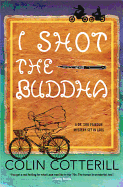
| Publisher: | Soho Crime | |
| Genre: | Fiction, Mystery & Detective, Historical, International Mystery & Crime | |
| ISBN: | 9781616957223 | |
| Pub Date: | August 2016 | |
| Price: | $26.95 |
| Mystery & Thriller |
by Colin Cotterill
Colin Cotterill spins another quirky, entertaining mystery in his 11th Dr. Siri novel, I Shot the Buddha. Since the doctor retired as the national coroner of Laos, his days have been filled with local gossip, seminars put on by the ruling Communist Party and managing his houseful of oddball monks, mendicants and homeless people. When Noo, a Buddhist monk who has been sleeping on Siri's back porch, disappears, he leaves Siri a cryptic note urging the doctor to help a fellow monk escape across the border into Thailand. Siri and his wife, Daeng, and their group of friends are drawn into a mystery involving the local secret police, a mechanic claiming to be the Buddha reincarnated and more than a few troublesome spirits from the afterlife.
Although Cotterill plunges straight into 1970s Laos with little context, readers can quickly pick up on its salient features: government inefficiency, low-level conflict between Buddhism and Communism, lingering traces of French colonial rule. Cotterill pokes fun at all of the above, as when Siri's friend Civilai drives an ancient Renault "at the pace of a government committee meeting" or is "held prisoner by his country's non-communication system." Siri is also accustomed to regular, brief visitations from supernatural beings, which begin as an irritation and eventually become a key plot point. While Siri and Daeng's paranormal adventures require a serious suspension of disbelief, Cotterill's twisty mystery plot will entertain readers while his cast of eccentric characters charms. --Katie Noah Gibson, blogger at Cakes, Tea and Dreams
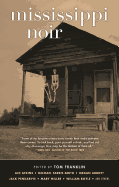
| Publisher: | Akashic | |
| Genre: | Noir, Fiction, Mystery & Detective, Collections & Anthologies, Anthologies (multiple authors) | |
| ISBN: | 9781617752285 | |
| Pub Date: | August 2016 | |
| Price: | $15.95 |
| Mystery & Thriller |
by Tom Franklin, editor
Akashic Books' noir series travels to Mississippi, with Tom Franklin editing this collection of short stories by both established and newly published authors. Mississippi Noir includes 16 tales, symmetrically organized in four sections of four: "Conquest & Revenge," "Wayward Youth," "Bloodlines" and "Skipping Town." The thematic groupings are loose, and the contents work equally well in any order, picked up and put down as the reader chooses.
These chilling stories vary in length, from 20-some pages down to just a few, and though they cover a range of subjects and settings in time, they consistently embody the ideal of noir writing with a strong sense of place. Bullets, blood, abuse and longing appear frequently, with some sex scenes thrown in as well. Ace Atkins writes of desperate teens running out of options; Megan Abbott, in a scintillating contribution, views from both sides a romance gone tragically wrong; Chris Offutt's understated story stars a waitress drifting from town to town; and Dominiqua Dickey's first published story involves an interracial romance in 1936. Within all of the pieces, the authors pay special attention to local details: natural beauty, economic depression, college culture, the longing to escape a small town or the yearning for a wider world.
These stories are dark by definition, and marked by unhappiness: as one narrator sighs, "I wanted sleep to pass without actually having to sleep. I wanted the future." But an appreciation for the surroundings is always evident; these pages drip with Mississippi humidity. Fans of classic noir will be pleased and rooted in this redolent setting. --Julia Jenkins, librarian and blogger at pagesofjulia
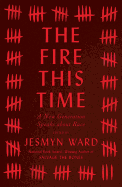
| Publisher: | Scribner | |
| Genre: | General, Minority Studies, History, Ethnic Studies, American, Social Science, Essays, African American Studies - General, Poetry, African American, Discrimination & Racism | |
| ISBN: | 9781501126345 | |
| Pub Date: | August 2016 | |
| Price: | $25 |
| Social Science |
by Jesmyn Ward, editor
Responding to the deaths of Trayvon Martin, Michael Brown, Eric Garner, Tamir Rice, Sandra Bland and so many others, the subsequent Black Lives Matter movement and a feeling that not much has changed, Jesmyn Ward (Salvage the Bones; Men We Reaped) felt moved to build a collection of words to counter the pain and injustice she saw. Essays and poems, many of them solicited by Ward, make up The Fire This Time: A New Generation Speaks about Race. Its title, of course, answers James Baldwin's 1963 The Fire Next Time, which addressed the same questions of being black in the United States.
Led by Ward's powerful introduction, contributions from Natasha Trethewey, Isabel Wilkerson, Edwidge Danticat and more consider past, present and future--Legacy, Reckoning and Jubilee. Honorée Jeffers writes in defense of Phillis Wheatley's husband, a man apparently wrongfully denigrated, and honors Wheatley's legacy while questioning the way it's been written by others. Kevin Young muses on Rachel Dolezal's interpretation of race. Garnette Cadogan writes movingly of what it looks like to walk through U.S. cities as a black man. And Ward offers an essay on her own ethnic heritage.
These powerful words from a range of sources vary in specific subject matter, but all make the same vital demands: for black citizens to have true equality. The entries in the collection are a little uneven, but each is stirring in its way, and the finest among them offer poetry as well as truth. --Julia Jenkins, librarian and blogger at pagesofjulia
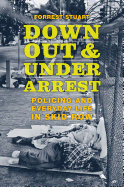
| Publisher: | University of Chicago Press | |
| Genre: | Political Science, Social Policy, Sociology, Law Enforcement, Criminology, Social Science, Poverty, Public Policy, Urban | |
| ISBN: | 9780226370811 | |
| Pub Date: | August 2016 | |
| Price: | $27.50 |
| Social Science |
by Forrest Stuart
The disordered state of zero-tolerance urban policing is the subject of Down, Out, and Under Arrest, the first book by University of Chicago sociologist Forrest Stuart. He is mixed race (black and Mexican) and grew up in impoverished San Bernardino, Calif. He spent five years doing a field study in the Skid Row neighborhood of Los Angeles, known as the homeless capital of the United States. Its residents are mostly black, unemployed, undereducated, disabled and addicted, and it has more police officers per capita than any other LAPD division.
In the 1990s, Los Angeles helped build three "mega-shelters" in Skid Row. These refuges emphasized rehabilitation over providing temporary food and shelter, and collaborated with the police to get people into their facilities. This altered how police officers viewed their work, which "led to a perverse development: the officers most committed to rehabilitation and reintegration... often acted the most punitively toward residents...." Stuart found that this approach burdens the poor with steep fines and jail time for minor infractions.
He recommends that the U.S. undo policies that treat the poor as undeserving, incompetent and immoral. Therapeutic policing should be replaced by programs that provide basic housing and voluntary access to services, and reduce the harms of self-destructive behaviors rather than trying to eliminate them--approaches that have been proven to succeed. This is a serious academic book, but it is also intimate and multifaceted, adding new insights and much-needed complexity to the current debates on policing in the poorest urban areas of the U.S. --Sara Catterall
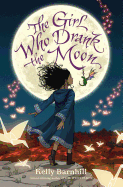
| Publisher: | Algonquin | |
| Genre: | Multigenerational, Fantasy & Magic, Family, Action & Adventure, Juvenile Fiction | |
| ISBN: | 9781616205676 | |
| Pub Date: | August 2016 | |
| Price: | $16.95 |
| Starred | Children's & Young Adult |
by Kelly Barnhill
Thirteen-year-old Luna wasn't always magic. She was accidentally "enmagicked" by Xan, the goodhearted witch who rescued her when she was abandoned as a baby in the annual "Day of Sacrifice," a tragic practice of the Protectorate, or the City of Sorrows, a dismal, foggy place inhabited by "a subdued people, a compliant people, who lived their lives in a saddened haze."
Even before she "drank the moon" and its powers, Luna, with her black hair, black eyes and "calm, probing, unsettling gaze," was different from other babies. Rather than finding new parents for the child, Xan decides to raise Luna herself in the forest home she shares with a bardic swamp monster, Glerk, and Fyrian, the endearingly cheerful, pocket-sized "Simply Enormous Dragon." Luna grows up to be "a tangle of mischief and motion and curiosity," and, as a teenager, her untamed magic is getting dangerous. Worse still, a brave but misguided young man from the City of Sorrows, seeking to abolish the tradition of baby sacrifice, is coming to kill the Witch, and Luna's mother, mad from grief and imprisoned in a tower, is plotting her way to the forest, too.
The Girl Who Drank the Moon takes a probing look at social complexity and the high cost of secrets and lies, weaving multiple perspectives, past and present, into one cleverly unfolding fairy tale. Kelly Barnhill (The Witch's Boy; Iron Hearted Violet) crafts wonderfully imperfect characters with poetic prose, warmth and wit. The resiliency of the heroes may be partly because of magic, but also because of critical thinking, empathy, deep love and the strength of family in all its unconventional manifestations. Thoughtful and utterly spellbinding. --Kristianne Huntsberger, writer, storyteller and partnership marketing manager at Shelf Awareness
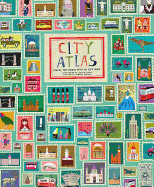
| Publisher: | Wide Eyed Editions | |
| Genre: | Travel, People & Places, Juvenile Nonfiction, General | |
| ISBN: | 9781847807014 | |
| Pub Date: | May 2016 | |
| Price: | $27.99 |
| Children's & Young Adult |
by Georgia Cherry, illust. by Martin Haake
Istanbul, Berlin, San Francisco, Amsterdam, Mumbai, Budapest, Hong Kong and Cape Town are just a smattering of the 30 world cities represented in the playful, kid-friendly and, unless you are made of stone, travel-inspiring City Atlas, first published in the U.K.
Readers are invited to lose themselves in these fascinating, history-rich cities, gorgeously showcased in abstracted double-page maps teeming with whimsical cut-paper-collage-style illustrations of people, animals, buildings, food, art, traditional garments, vehicles, historic sites and tourist attractions. Each intriguing icon is labeled with a very short caption identifying local must-dos: in Lisbon, "Go crazy for Portuguese CUSTARD TARTS"; in Amsterdam "See Anne Frank's secret annex during World War II at the ANNE FRANK HUIS"; or, in Chicago, "Go on a nighttime aquatic adventure at the SHEDD AQUARIUM." The search-and-find challenge (find five painted blue skulls in Mexico City, five lucky dragons in Hong Kong, five koala bears in Sydney or five Russian dolls in Moscow) is bound to have young explorers scouring every inch of the dynamic and colorful pages. The mother country of each city is represented by a picture of the national flag, its population and primary language, and a flag-waving person is always somewhere to be found saying "hello" in one of that city's spoken languages.
Readers will want to drop the book and jump on a plane to see Frank Gehry's giant goldfish sculpture in Barcelona, play telephone at St. Paul's Whispering Gallery in London or explore the star-shaped Kastellet sea fortress in Copenhagen. Go. Go! --Karin Snelson, children's & YA editor, Shelf Awareness